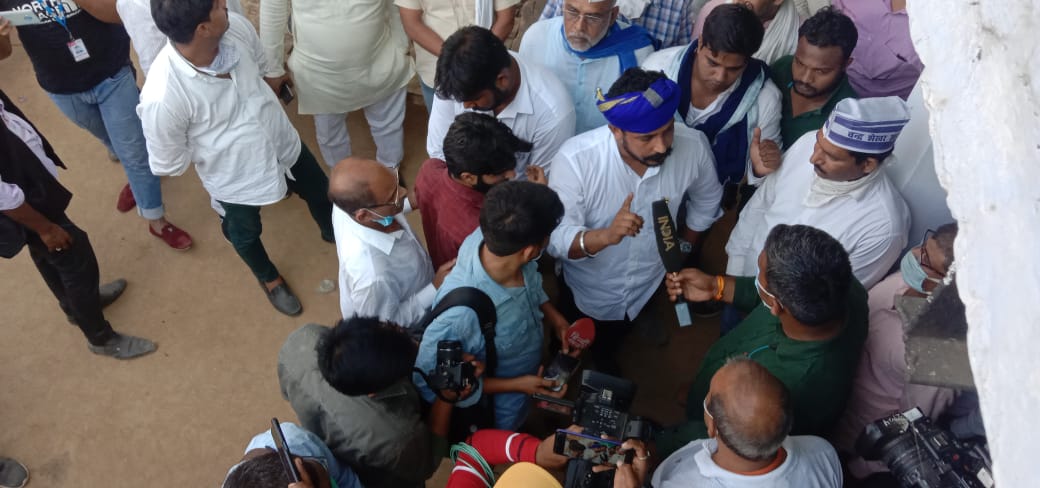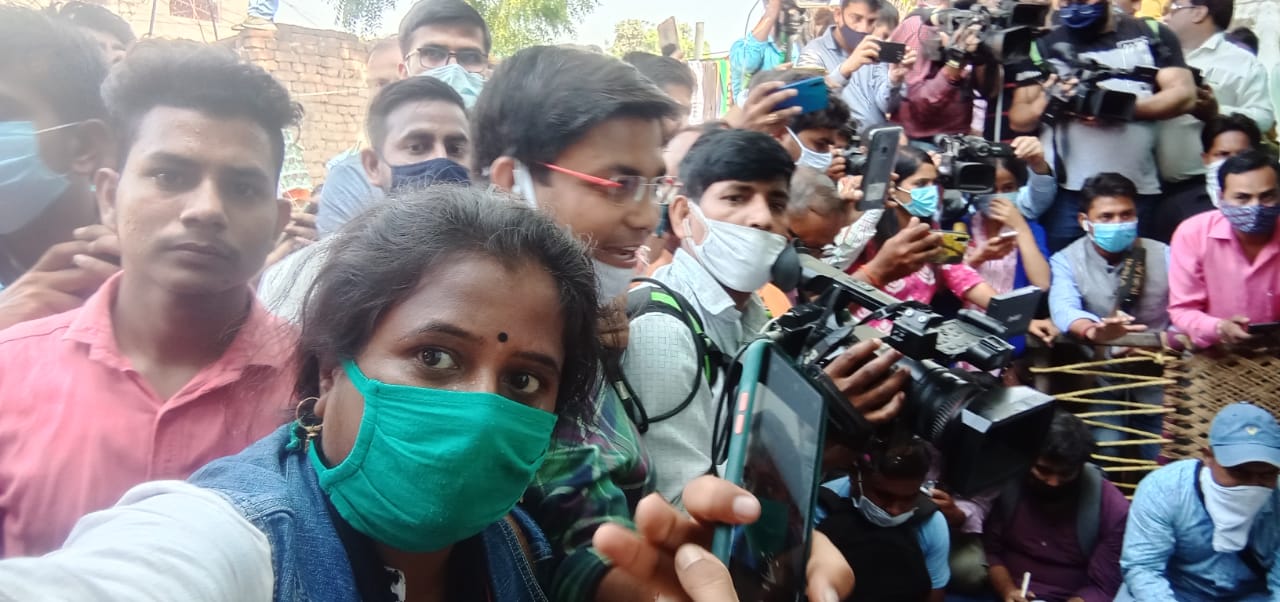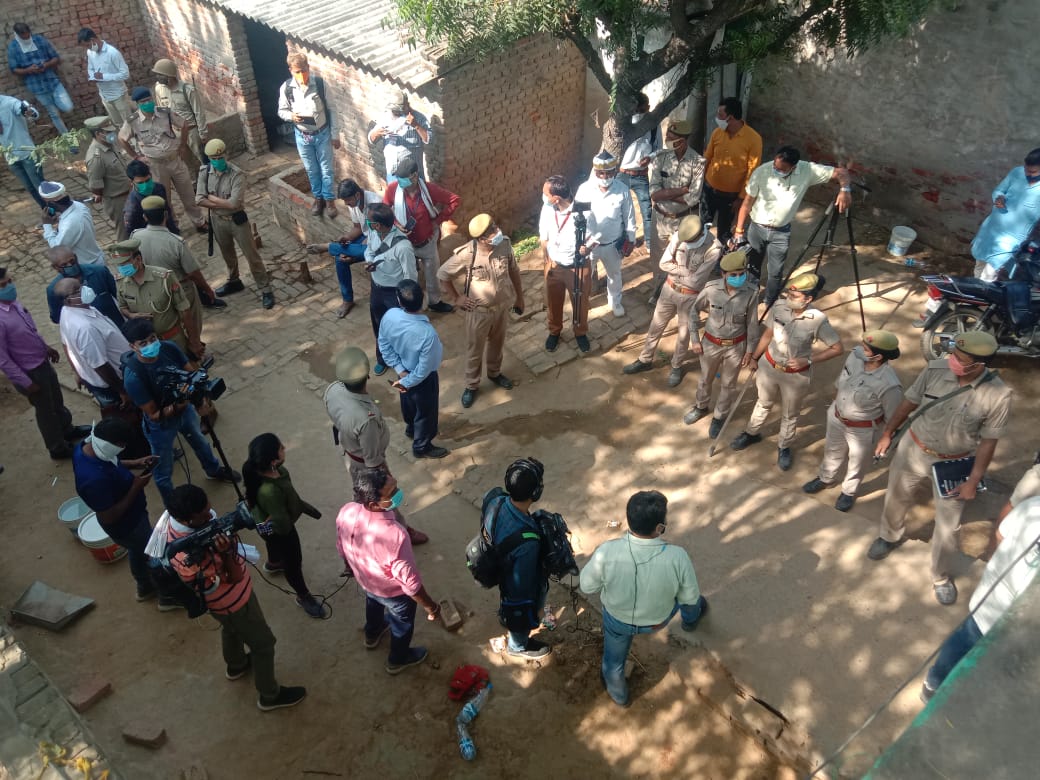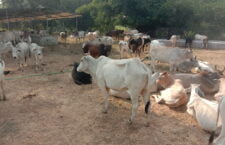Hathras: Almost 30 years ago, field tests that significantly influenced Khabar Lahariya, a local Bundeli newspaper in the parched landscape of Banda district in southern Uttar Pradesh, discussed the accuracy of using a Hindi word like balatkaar in reporting rape.
But balatkaar, local women readers and reporters said, was too blunt, too far from the reality of their own articulation of sexual violence: zabardasti (force) or galat kaam (wrongdoing).
On the afternoon of 14 September 2020, in a field of standing millet in the village of Boolgarhi, in Hathras—a district of western UP, 200 km east of Delhi and less than 50 km from Mathura, the mythological birthplace of Lord Krishna, affectionately and reverently also called ‘Thakurji’—a girl was found mangled, her spine broken, limbs askew, vomiting blood.
The girl was Manisha, a Dalit, more specifically a Bhangi, one of the lowest Valmiki sub-castes. Her attackers, allegedly, were her upper-caste Thakur neighbors.
Over the next fortnight, as the “facts” of this case became known and Manisha’s condition worsened, eventually leading to her death, this crime snowballed into one of the biggest news stories of the year.
But how did this age-old story of sexual violence, involving protagonists from different communities and a questionable investigation, lead to national, international, media, and political outrage?
Spoiler alert: there is no answer, only more dubious facts, which point to the blurred lines between truth and falsehood, agency and entrenched social structures, and the way that technology, politics, and economics make these lines shift in our individual and collective imagination.
A Familiar Tale of Caste And Violence
In Boolgarhi, the weekend after Manisha died, it was not the brutality or exceptionalism of the case, but the virality of it—involving a hungry media, politicians from all parties—that stood out. Many young women reporters strained over men to get interviews and made the point that an alleged sexual assault of a Dalit by a Thakur was suppressed and justice perverted.
Khabar Lahariya’s investigation moved away from Manisha’s swarming household, to the particular context in which it occurred.
For close to 20 years, we have been the only women reporters at the silent site of crimes against women, especially caste-based crimes, which are often not recognized as crimes at all. We were taken aback by the scene of the crime in Hathras where the media mobbed the tired family.
We withdrew into the side-lanes and explored the pervasiveness of caste and violence. The three Valmiki households in Boolgarhi are surrounded by Thakur houses, all along the main thoroughfare. Their lives are interconnected yet rigidly separate.
“Everyone is expected to go to the functions the Thakurs host; no one comes to the Bhangis, however significant the occasion: birth, death, wedding,” Manisha’s aunt told us. “We eat outside on the ground at their functions, separate from the others. We are to take our plates in our own hands and discard them.”
Hari Om, the uncle of Sandip, one of the four main accused, explained that these were the ways of “our elders, our culture”.
“Things are changing in the cities, not in remote areas,” said Hari Om. “It will change, by and by, but it hasn’t yet. And if they keep making trouble like this, how will these practices end? Never.”
While the relatives of Sandip and Ravi Singh, another accused, insisted the families “got along well”, it is well known in the village and Manisha’s neighborhood that her family and the families of the accused have long had differences, often ending in violence.
Manisha’s family had registered complaints in the past, and one case under the Scheduled Caste and the Scheduled Tribes (Prevention of Atrocities) Act in 2001. This was “settled” for money some years ago “under pressure”, Manisha’s family said.
The underlying tension and resentment were far from settled and the fact that the Valmiki family was alert to intimidation and not averse to taking matters to the police was not appreciated by the Thakurs.
“Sandip and Ravi would both harass her when she stepped out of the house,” another of Manisha’s aunts told us when asked about the possible build-up to the crime. “They would grab her hand, call her on the phone. Sandip’s father told him off twice when we complained. But see, the third time he just went straight ahead and committed this crime.”
Neither Sandip’s family, nor the strong voice of the Thakur community, which has sought to deny the guilt of the accused, and see this as a political and media conspiracy, think much of the “crime”, let alone its exceptionalism.
What is exceptional, and unacceptable, is that Dalits have spoken up and the furor that has been created.
“Maybe Sandip did something, we can speculate,” said Hari Om. “But then the family went to meet Manju Diler [the daughter of Rajvir Singh Diler, local MLA, a Valmiki and a well-known BJP party-worker], and she was the one who picked up this whole thread of gangrape and everything that’s become such a big issue. We don’t even know how the girl died. She was fine in the police station, fine in Aligarh. All this stuff about her tongue and back being broken was fake news.”
Aman Rana, a young Thakur leader and a member of the Bajrang Dal, was more dramatic in his rhetoric, a pink scarf around his neck, his eyes roving behind us, watching the crowd that was listening.
“Is Rajvir Singh Diler a Dalit first or an MLA of Hathras first? And isn’t [the victim] our daughter as well?” asked Rana, who saw “a conspiracy” behind the turn of events.
In the first FIR, Sandip is accused under the provisions of the SC/ST Act of beating and strangling Manisha. But on 19 September (the post was on 27 September), he said, “there is a post on Manju Diler’s Facebook that there was gangrape and three more men involved. All of them have alibis. The next FIR is filed on 22 September. Isn’t this politics”?
Of course, Rana hastened to add: “I think anyone who is guilty should be punished, the strictest punishment. Tie them to a post and let the dogs loose on them. But the innocent should be released immediately.”
Women As Low-Value Pawns In Negotiated Settlements
For close to a week after the Hathras incident, it barely registered on the surface of a state in the throes of a pandemic and economic strife, where violence—especially violence against women—is unexceptional.
On average, 87 women are raped every day in India, according to a 2019 National Crime Records Bureau report. UP has an average of 163 crimes against women per day, the highest in the country. The same report lists a 7.7% rise in crimes against scheduled castes, the highest such proportion of which are reported from UP.
Many are killed by family members, for dowry, for suspected flirtation, for undercooked rice; many routinely abused by dominant castes. Local panchayats intervene, cases are silenced and money exchanges hands to maintain the status quo. Evidence is routinely doctored or obscured and the “truth” is always elusive. The system is molded around the realities of caste and poverty, and the media or State rarely notice.
Two cases from Khabar Lahariya’s reporting experience come to mind. A Dalit woman in Mirzapur who contested and then won the election to the block development council in December 2016, less than three months before the current BJP government came to power in UP.
Accused of overstepping her boundaries, her daughter was gang-raped. When the family tried to file a first information report (FIR) at the police station, they and the survivor were subjected to such acute humiliation that the daughter hung herself. A case was filed, the perpetrators were jailed, yet the family had paid an unacceptably high price.
Six months later, in June 2017, when we reported on a case in Lalitpur district, where a Lodhi girl (categorized as an “other backward caste” in UP, yet powerful in socio-political terms through the border districts of UP and MP) was allegedly gang-raped over eight months by five men.
When the girl got pregnant, the men arranged for an abortion. The family and village came to know of the abortion and local panchayats sat in judgement 21 times to punish not the perpetrators but the girl and her family.
Despite paying numerous “fines” decided by the panchayat (“just tell us what to do to remove the stain from our name,” the girl’s brother said to KL reporters Rajkumari & Suneeta), the family was ostracised. The case was finally registered in the local police station but was “settled” by the family soon after.
When we spoke to Meena, an activist in Lalitpur who has worked with Dalit and tribal women for over two decades, to get an update on the case and others in the area in light of the Hathras spotlight, she said, “If these samjhautas [compromises, settlements] keep happening, then violence will keep happening, what else?”
Meena pointed out that the cases involving Dalit girls, whose bodies and sexuality is more likely to be publicly discussed than that of dominant castes, often get more local and media attention than cases involving dominant-caste women, which tend not to get written about, since izzat (honor) must be protected at all costs.
In a state like UP with a feudal history and where violence is a cultural reality as much as caste or gender norms, even progressive laws are subject to cruel misuse. Laws around sexual assault and even the SC/ST Act, meant to visibilise and seek justice for structurally silenced discrimination and abuse, are routinely used as vehicles to navigate structures of power and broker more lucrative and speedier out-of-court settlements.
A case, such as the one above, could be true or “false”; the evidence, howsoever clear it seems, is always malleable, depending on who is reporting the crime, the police officer who chooses whether or not it will be put on record, and what money can be made out of the situation if it is settled out of the police station or court.
Most often, no one hears of the most brutal of crimes. Women are often only low-value pawns in a high-priced and complex negotiation required to navigate the gritty every day; minor, often calculated risks in business transactions.
Which is also what makes the idea of “zero tolerance” to violence against women almost absurd, in a state where this is the most tolerated of crimes. No matter how many womens-safety campaigns the state launches, the violence is structural and rooted in pragmatism.
Enter The Politician
What factors conspired then to trigger the response in Manisha’s case?
The incident began to be noticed via the “viral” quality of two videos of Manisha, in the police station after her assault and at the hospital soon after, when she says a man called Sandip attacked her, on her resisting being forced upon.
These videos were shared widely on social media (but are difficult to trace now, since most interviewees we spoke to had received and deleted them). On 21 September, Manju Diler began to monitor the incident on her Facebook timeline.
“[Rajvir Diler] never thought, here is a constituency who has supported him without him having to do anything, and now a daughter from his community is casting aspersions on us! Shouldn’t he have done something, settled something?” Hari Om asked.
On 4 October, Manju Diler’s Facebook post applauded the Yogi Adityanath government for ordering a Central Bureau of Investigation (CBI) inquiry into the case. Hari Om echoed her sentiment: “The truth should come out. That’s what we want. Doodh ka doodh, paani ka paani. Unadulterated truth.”
In a state known for using women as political proxies, Manju Diler is a fascinating character in the “politics” of the Hathras case. Between regular, sophisticated Facebook posts commemorating a range of political, historical and literary figures on their birth and death—Ram Vilas Paswan, Deen Dayal Upadhyay, Dinkar, Premchand, Bhagat Singh, Sunita Williams—Manju Diler, once BJP state secretary and now member of the National Commission for Safaikarmis (sweepers), followed the case of Manisha’s assault from 21 September till soon after her death.
She talked about meeting the police, discussing and preparing for specialised medical care for Manisha. She listed extensive participation in these “meetings” of BJP party members or officials from the region.
On 27 September, her post updated the status of warrants and arrests of three additional men named in Manisha’s statement of 22 September, and according to the FIR that was subsequently updated, her rape by the four men.
The posts were accompanied by photographs of Manju in the village, with Manisha’s mother, with police, with Manisha herself in hospital. She repeatedly mentioned that she had arranged to transfer her to the All India Institute of Medical Sciences in Delhi, and that the family was satisfied with the care in Aligarh district hospital.
Her Facebook posts were well received: members of Manju’s own Valmiki community and the majority Rajputs of the area appreciated her efforts to monitor the case and look out for the family. For most of the time Manju was following the case, it received little to no media attention.
Manju’s even-toned, factual updates did not include Manisha’s worsening condition or her abrupt transfer to Delhi, the day before she died. Her condolence post on 29 September was heartfelt and ended with a strong commitment to get the case heard in a fast track court.
Manju Diler was not available for comment despite our efforts to reach her over several days via multiple platforms. We will update this story when, and if, she answers.
We left Boolgarhi at dusk, as its city visitors and swarm of politicians and media abated. We visited an activist in the region who works on the rights of the poor and Dalits. She refused to comment. A few days later, we interviewed an activist in Banda, under conditions of anonymity.
“We’re fearful. We want to say something, do something, to protest, to speak to the government,” said the activist. “But who do we speak to in this atmosphere? We’re scared we’ll be attacked, our families will be attacked, FIRs will be filed against us for speaking. So we stay silent.”
UP has lived through substantial social churn since the mobilisation and political empowerment of “lower castes” in the 1980s and 1990s and the rise of the Bahujan Samaj Party. Neither violence nor the firmly drawn lines of caste are new to the UP hinterland. The same goes for the use and abuse of the criminal-justice system.
But the stream of audio-visual evidence distributed via social media today reveals the brutality of the crime in Hathras, gender and caste violence. From our experience, evidence can be deleted, edited, adapted and appropriated.
When the administration and police obstruct justice, neglect video testimonies, cremate a body in the dead of night, citizens with easy access to smartphones find it more difficult to digest than before.
We may never know if Manisha’s assault and death were the bloody end of an argument with a friend, someone her family disapproved of, or the decisive culmination of a decades-long intergenerational feud between two families who lived alongside each other on socially decreed conditions. We may never know if there was a conspiracy between the police, the ruling administration and know of the caste politics deployed with an eye on upcoming panchayat elections, now possibly postponed to 2021.
(Disha is the CEO of Chambal Media, a company that produces media for rural audiences with a unique feminist voice. Khabar Lahariya is Chambal Media’s flagship brand.)
This story first appeared on Article 14.
To watch more on Hathras case click here





